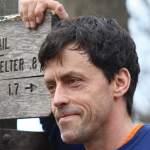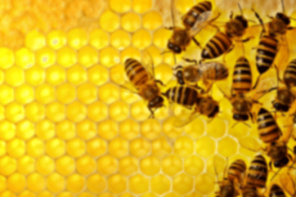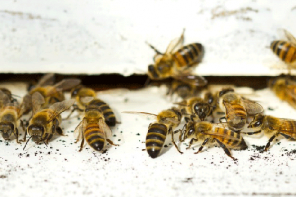By: Jay Evans
C-C-Decade –Reflections On 10 Years Of Chasing A Curse
We in the scientific world can bask in many battles won through the identification and treatment of honey bee challenges, and we do so. Still, it is hard for anyone to claim that we are winning the war for bee health. I am just off the phone with another long-suffering commercial beekeeper who reports tremendous losses by himself and his beekeeping colleagues this Winter, just as their bees are needed in California for their most important pollination event. This call comes more than ten years after he and others reported what became labeled Colony Collapse Disorder (CCD). Some of the forensic signs are the same; colonies with a laying queen but few foragers, or a forager force that declines sharply in a week or two, plenty of stored food, and a serious lack of dead bodies. In other cases colonies simply don’t build up, despite having all the eggs and brood needed to explode. The common thread seems to be a dearth of older bees. As a middle-aged researcher I feel a bond with middle-aged bees that drop dead just when they have a chance to bring treasure to their sisters. I am optimistic beekeepers, scientists, and others who care for bees will win this war (note my #Beeoptimism challenge from January) – but why does it have to be so hard?
As was the case in 2007, pests, pathogens, and chemical insults are the most likely suspects. But which of these, and why do they push some colonies and entire operations over the cliff and not others? Much has been written about synergies and compounded effects, and scientists are making progress tackling those synergies. However, as Ross Conrad wrote in this magazine (February, 2018), we will never have the time or resources to march through and test each and every possible combination of living and non-living factors that impact honey bee health. This fact leads to two possible strategies. The first strategy is to continue on with experimental tests after winnowing down the number of suspects and their toxic twins based on exposure, predicted interactions, or lucky forensic breaks. This strategy works and has been the basis for some insightful studies in the past year. For one, USDA researcher Yu Cheng Zhu and colleagues measured the impacts of the common pesticide imidacloprid when alone or in conjunction with a set of seven compounds most likely to co-occur with imidacloprid in the environment (https://doi.org/10.1371/journal.pone.0176837). The results help predict which compounds are most damaging when delivered in concert. Zhu coupled these survival assays with enzymatic screens to determine which bee defenses were effective against each compound. Such studies are excellent for explaining the world and specific risks, and fall within the comfort zone of us scientists, but they are painstaking and therefore cannot address every biological and physical threat to honey bees. It has been argued that a more experiential, rather than experimental, approach is needed.
Farmers of all sorts tend to fall more into the experiential, or intuitive, fold. I was reminded of this by the recent death of my wonderful stepfather Melvin Getz, a long-term and very successful Colorado rancher. Mel was retired from ranching when I met him twenty years ago but he had endless stories of the trade and they were fascinating. He could rope and throw and brand them, for sure, but rather than try to understand cattle he clearly succeeded through an innate ability to understand the external forces on cattle and their human keepers. Most of his working days were spent on non-livestock challenges including water and grazing rights, community connections, economics, and snowstorms. He and those in his extended family spent as much time studying these external issues and advocating for them as they did riding herd, and that was a requirement for staying successful. In my limited experience as an outsider, commercial beekeepers who have survived more than a few years are the same way. They are super intuitive and aware that their livelihoods depend as much on their intuition for economics, outside challenges, and sociology as on their knowledge of bees.
Dr. Sainath Suryanarayanan from the University of Wisconsin has put together an important set of writings describing how scientists and intuitive beekeepers think differently about the challenges at hand. Sai has studied both entomology and societal forces and he presents compelling arguments that both sides can be blinded by their biases, resulting in over-predicting (more often on the beekeeper side) and under-predicting (more often by those adhering to the standards of modern science) the degree to which the above stresses impact bees. One example he describes that struck home for me was the description by beekeepers and more intuitive scientists of ‘spotty’ brood patterns. A beekeeper with years of experience will know in their heart that something is wrong (and they are right) and will be tempted to associate this syndrome with something/anything out of the ordinary in their recent past. In contrast, many scientists will take this as an opportunity to reduce the fates of individual larvae to singular causes and might spend a lifetime, or at least a PhD, tackling a handful of potential causes. This doesn’t necessarily mean that either side has bad intentions, just different ways of approaching a crisis. Sai, along with Daniel Kleinman, has presented these and more arguments in a stimulating book, Vanishing Bees: Science, Politics, and Honey Bee Health (Rutgers University Press). In the open-source spirit of this column you can also immerse yourself in some of Sai’s thinking for free, via youtube at (https://www.youtube.com/watch?v=UlxCXa4DgjY).
While I will mostly stay in the comfort zone of established science and its culture, Sai and Mel, although they never met, have taught me there is another path toward our common goal of healthier bees. I told Kim Flottum when I asked for the opportunity to write this column that it would not be Shakespeare, but I think a quote from Hamlet fits nicely:
“The time is out of joint.
O cursed spite, That ever I was born to set it right!
Nay, come, let’s go together.”
Jay Evans is the Research Leader for the USDA Honey Bee Lab in Beltsville, MD.









